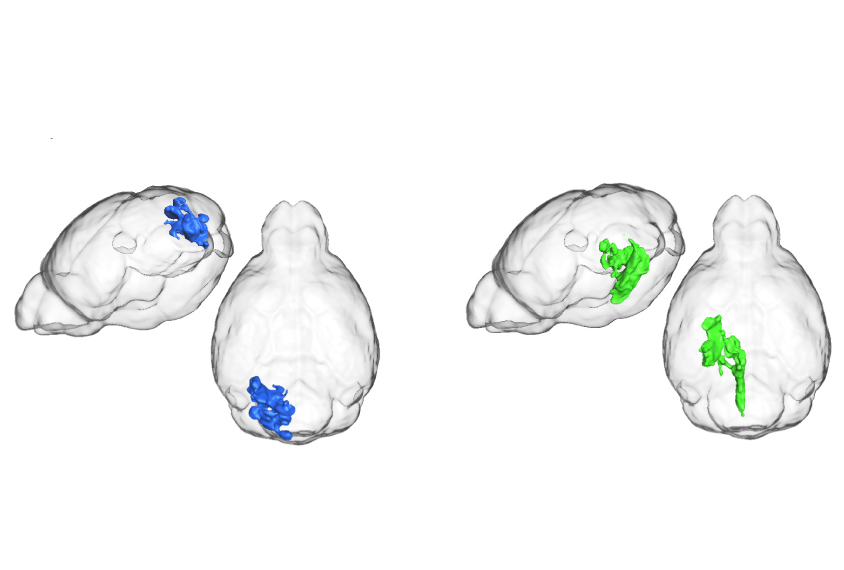
Autism mice have unusually symmetrical brains
Mice that carry mutations linked to autism are less likely than controls to show size differences between right and left brain regions.
Mice that carry mutations in autism genes are less likely than controls to show size differences between right and left brain regions. The unpublished results were presented yesterday at the 2016 Society for Neuroscience annual meeting in San Diego. The finding rests on 76 mouse models of autism, the largest collection of models tested in a single laboratory.
Brains have two hemispheres, which are roughly mirror images of each other. But brain regions are sometimes larger in one hemisphere than in the other. These size differences may reflect function. For example, language tends to be weighted toward the right brain. Some data have shown altered structural and functional asymmetries in the brains of individuals with autism.
In the new study, researchers used magnetic resonance imaging to assess the volume of 131 regions on both sides of the brain in 476 typical mice. More than half of the regions showed some asymmetry.
Three regions stood out as showing the greatest imbalances, with larger volumes on the right. These are the cerebellum, which coordinates movement; a region that includes part of the hippocampus (a memory center) and the amygdala (an emotion hub); and a region that spans the corpus callosum (a band of fibers that links the hemispheres) and the motor cortex.
The cerebellar asymmetry is particularly interesting because this region is often unusually small or large in mouse models of autism, says Jacob Ellegood, research associate at the Mouse Imaging Centre in Toronto, who presented the findings. In addition to being a motor center, the cerebellum has autism-related functions, such as emotion regulation and attention. “The cerebellum doesn’t get enough credit,” Ellegood says.
Growing areas:
Ellegood and his team then looked at the volumes of the same three regions in 864 mice spanning 76 different autism models. As a group, these mice show less asymmetry in the regions than controls, though not all of the autism models showed this reduction in asymmetry.
Mice with a mutation in both copies of the gene CNTNAP2 show the greatest decrease in asymmetry compared with controls. No one region in these mice shows brain volume differences compared with controls when the right and left sides of the brain are considered together, Ellegood says.
Ellegood says it is not yet clear why a loss of asymmetry would accompany autism. One possibility is that typical asymmetry results from heavy use of a skill that primarily relies upon one side of the brain. Under this theory, the reduced asymmetry in the brains of the autism mice might stem from unusual responses to experiences.
“Certainly in the human population, if you juggle, if you play music, then that area of your head gets bigger,” Ellegood says. “So whether this finding is environmental or developmental is an open question.”
Ellegood’s collaborators have already given many of these mice a range of behavioral tests. It would be interesting to match the structural asymmetry with behavior, says Albert Basson, reader in developmental and stem cell biology at King’s College London. Basson was not involved in the study, but collaborates with Ellegood on other work.
For more reports from the 2016 Society for Neuroscience annual meeting, please click here.
Recommended reading

New organoid atlas unveils four neurodevelopmental signatures
Explore more from The Transmitter
Snoozing dragons stir up ancient evidence of sleep’s dual nature

The Transmitter’s most-read neuroscience book excerpts of 2025


